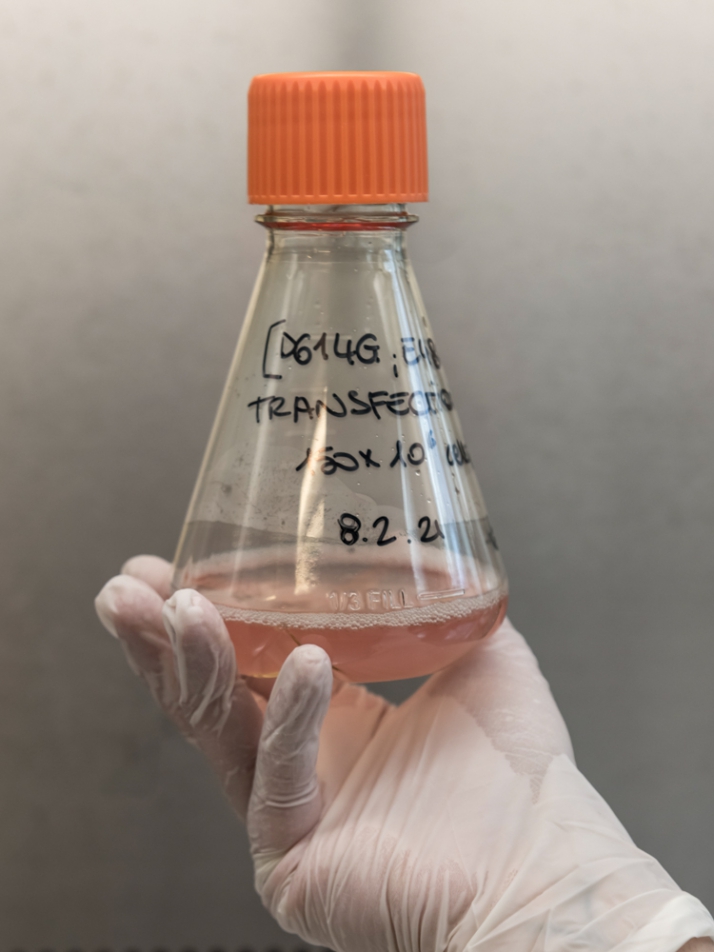SCIENCE
One of the first announcements made by US president Joe Biden, following his installation in the White House in January 2021, concerned the pandemic and his intention to “listen to the science”. Biden said this, in fact, while announcing the appointment of a twelve strong task force of experts to combat and contain the spread of the coronavirus in the USA. “Tackling the pandemic is one of the most important battles,” claimed the president, “and I will be informed by science and by experts”. Though these words seem obvious, they were never uttered by his predecessor.
Nevertheless, the Covid emergency unequivocally demonstrated the fundamental role of science and technological innovation, thanks to which the world was able to continue to function in spite of an almost global lockdown, communicating, moving goods, curing patients in hospitals, but, above all, isolating the virus and developing vaccines in extraordinarily rapid times compared with the past.
And also for the future we know that without a shadow of a doubt – if any still remains – that science will be the most reliable and authoritative voice that we can listen to.
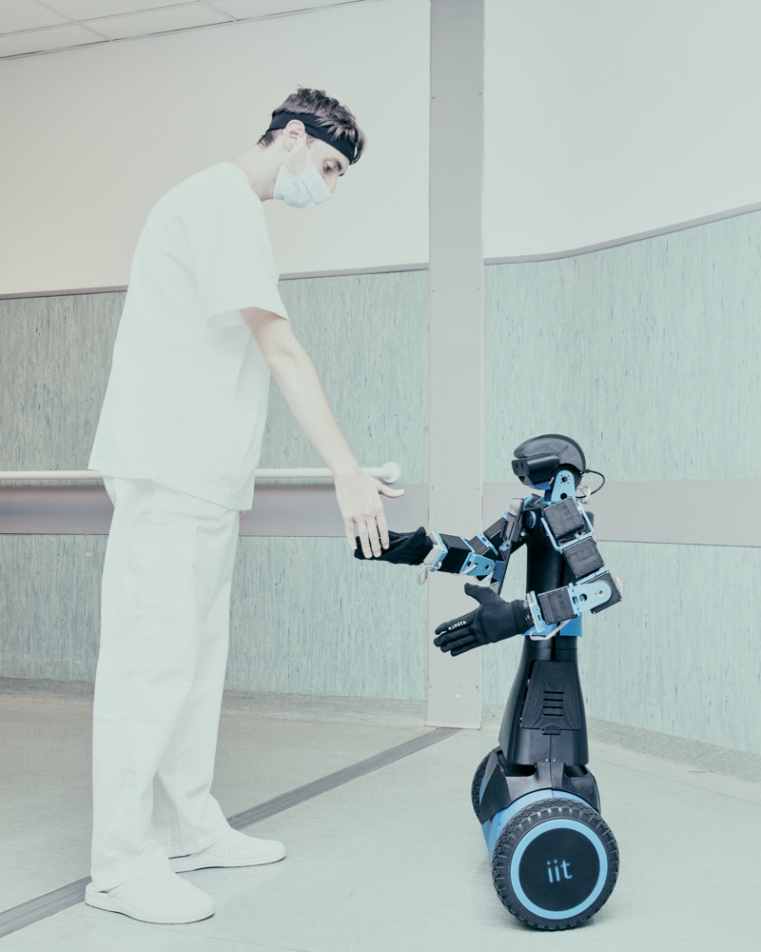
In the Vascular Surgery Operating Unit of Cisanello Hospital in Pisa, the AlterEgo robot, which was developed by the Italian Institute of Technology as an aid to healthcare personnel, interacts with nurses.
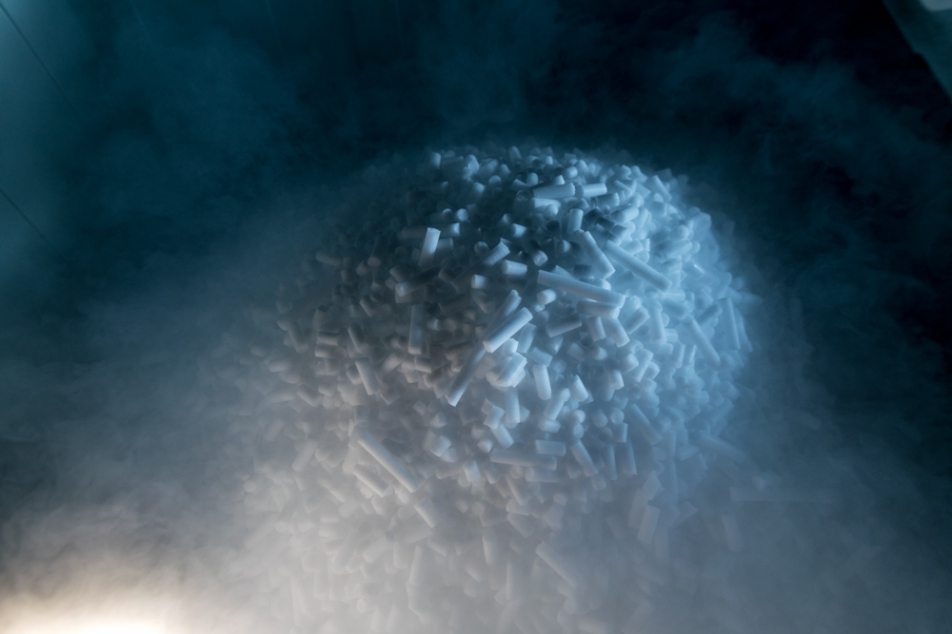
Dry ice is obtained by lowering the pressure of liquefied CO2, some of which vaporizes, reducing the temperature of the remaining liquid, which solidifies into a snow-like consistency. The CO2 snow is then pressed in the hydraulic machines produced by Locatelli Meccanica at Subbiano (near Arezzo), creating pellets of dry ice that are ideal for reducing and maintaining the temperatures inside the containers used for transporting pharmaceutical products and vaccines.
Fontanella (Bergamo). Military personnel from Russia's special biological unit conducting operations to decontaminate the Fondazione Domus E.D.E.R.A. care home. It was one of the numerous activities carried out in the Bergamo area as part of Moscow’s “From Russia with Love” operation to provide international assistance during the pandemic emergency in northern Italy.
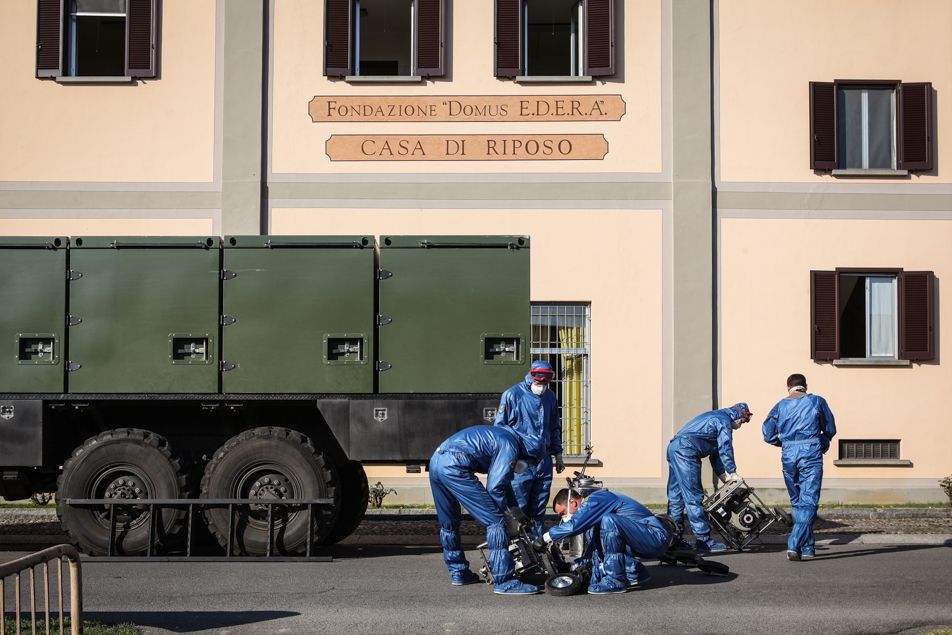
Based on an idea by Renato Favero, a former head doctor at the Gardone Val Trompia Hospital (near Brescia), Decathlon snorkelling masks can be transformed into respirators. The FabLab tech company then produces the valves that enable the masks to be connected to oxygen cylinders.
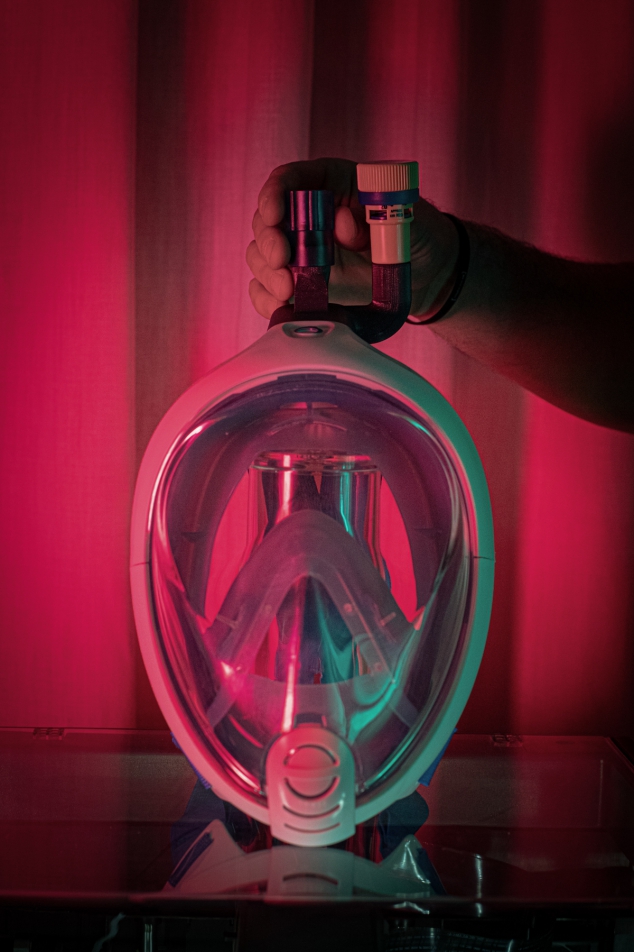
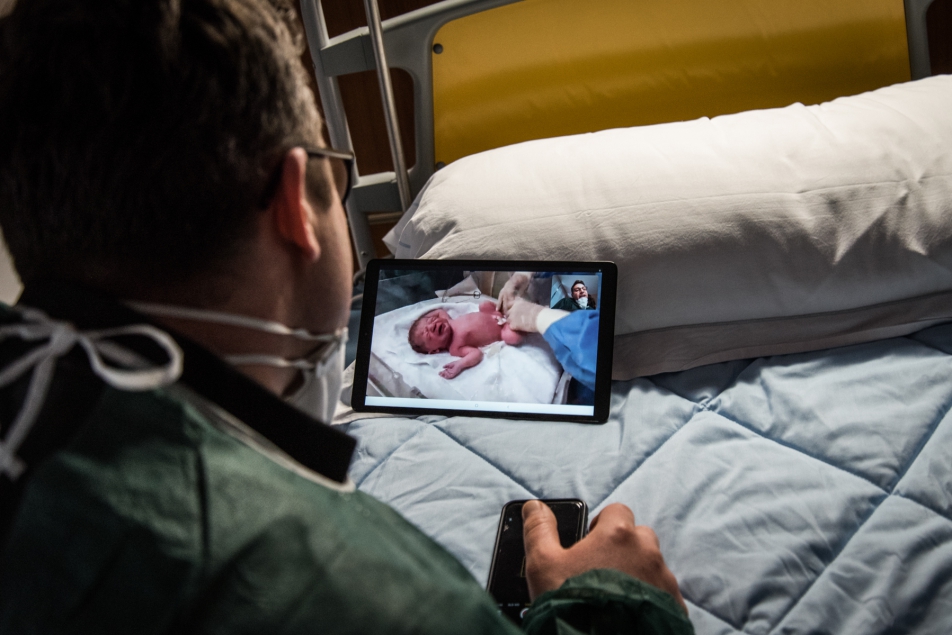
At the Humanitas San Pio X Hospital in Milan, Diarti Mane, who was originally from Albania, uses a tablet provided by the hospital to watch his wife Luna Melchiorri give birth to their baby daughter, Camilla.
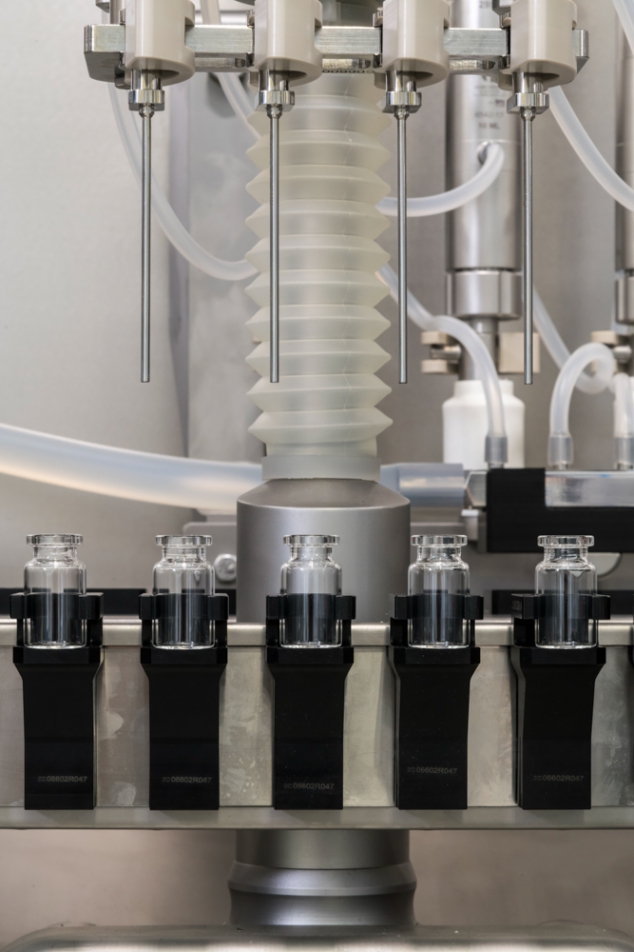
A production line machine for filling ampoules at the Marchesini Group factory in Monteriggioni, near Siena. Machines like this have been purchased by the main international pharmaceutical companies, including the one that produces the Sputnik V vaccine in Saint Petersburg, Russia.
A technician peers through the door at the production area for the vaccine developed at the ReiThera laboratories in Castel Romano, near Rome. The prevention of cross-contamination depends on stringent separation in both space and time. The structure has independent rooms for viral production, a room for cell cultures, a room for the preparation of the media and a room for the sterile filling of the phials to meet the operational requisites.
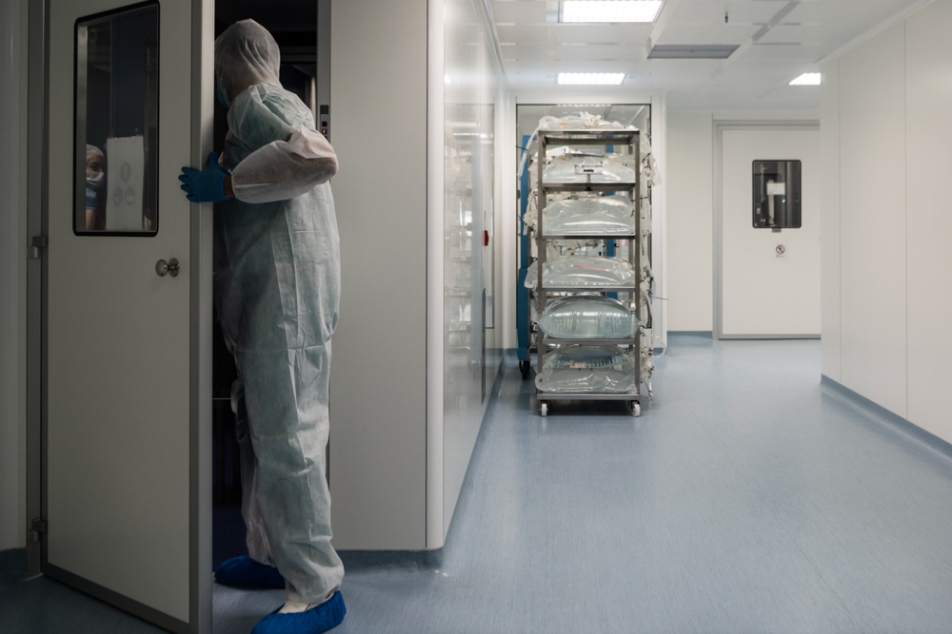
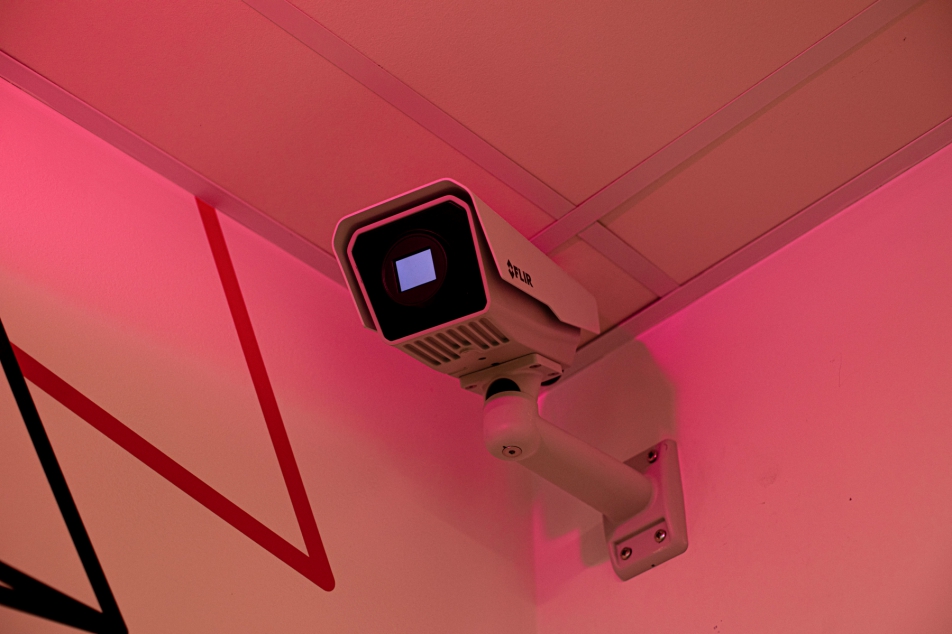
The laboratories of the Italian Institute of Technology in Genoa. Alessio Del Bue and his team have developed open source software to improve thermal imaging cameras in order to detect body temperature by pinpointing the subject’s forehead.
One of the first days of anti-Covid-19 vaccinations at the Papa Giovanni XXIII Hospital in Bergamo. In this initial phase, only hospital staff are being vaccinated.
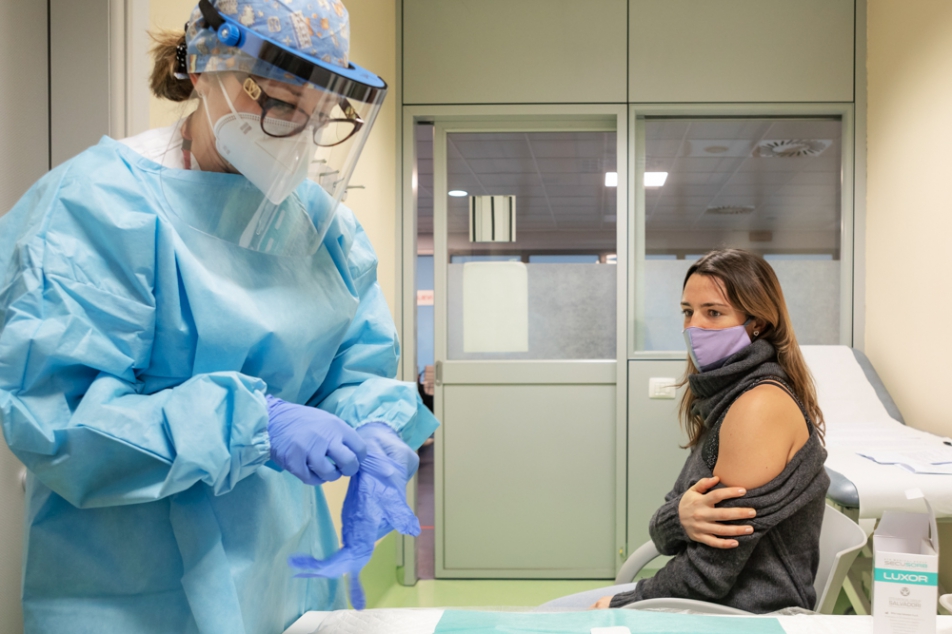
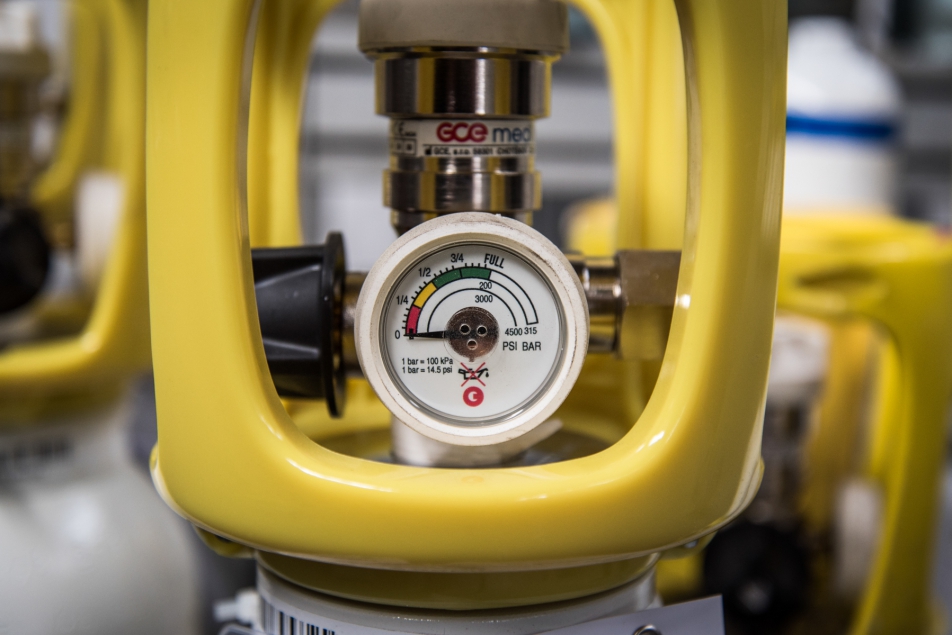
At the premises of Sapio in Caponago (near Monza), a detail of a portable oxygen tank for medical use.
Genoa. A doctor dressed in full PPE in the patient ward on board the MV Splendid, which has been converted into a Covid-19 hospital.
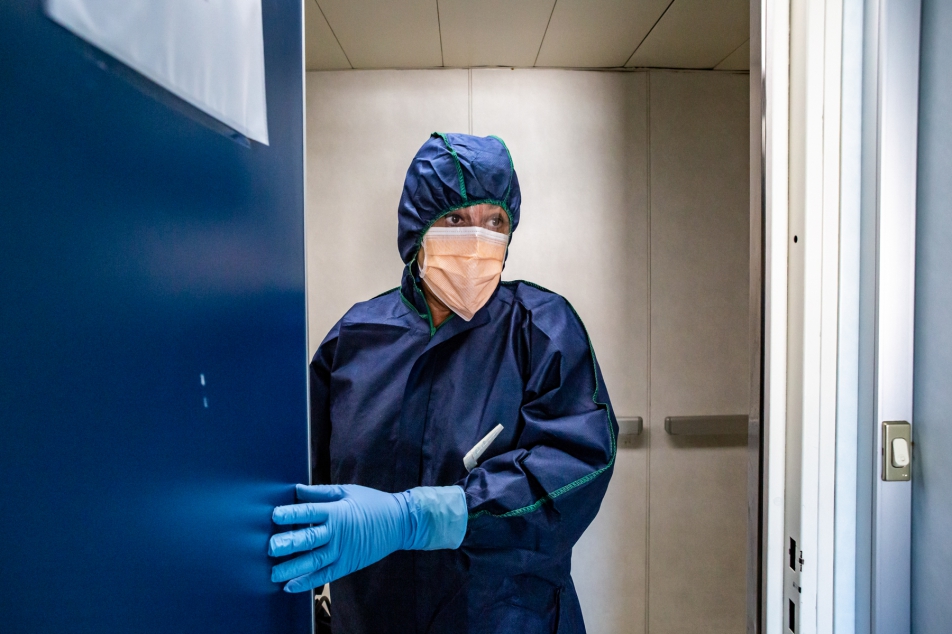
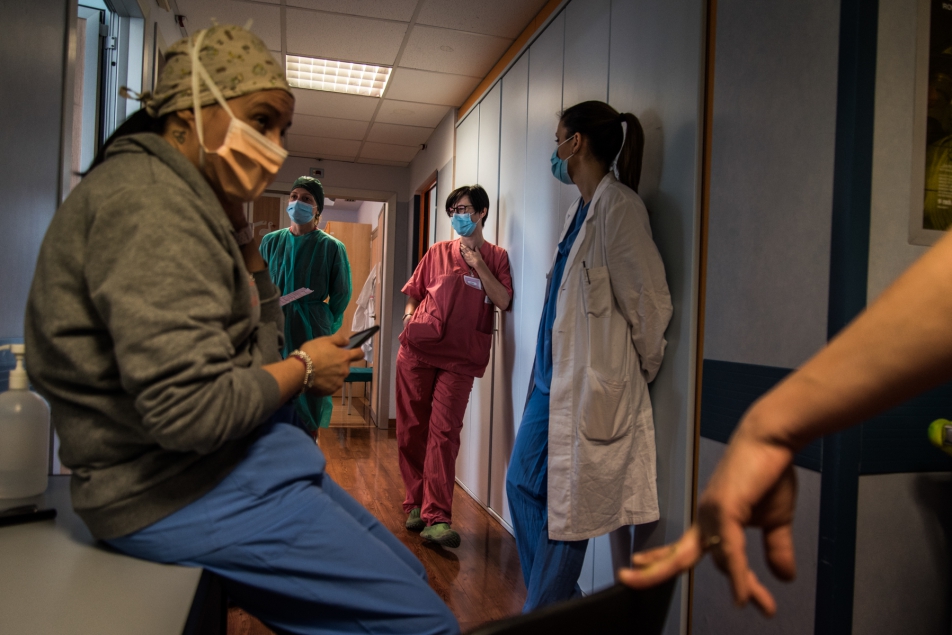
Midwives at the Buzzi Hospital in Milan on a break. Wearing a face mask is now compulsory.
Marco Costa, who works as a nurse in the Intensive Care Unit at the Careggi Hospital in Florence, immediately after being vaccinated against Covid-19. On December 27, 2020, Europe officially launched the vaccination campaign to fight the pandemic. The first vaccine approved for use on humans was produced by Pfizer-BioNTech. Costa was part of the selected group of doctors and nurses who received the vaccine first.
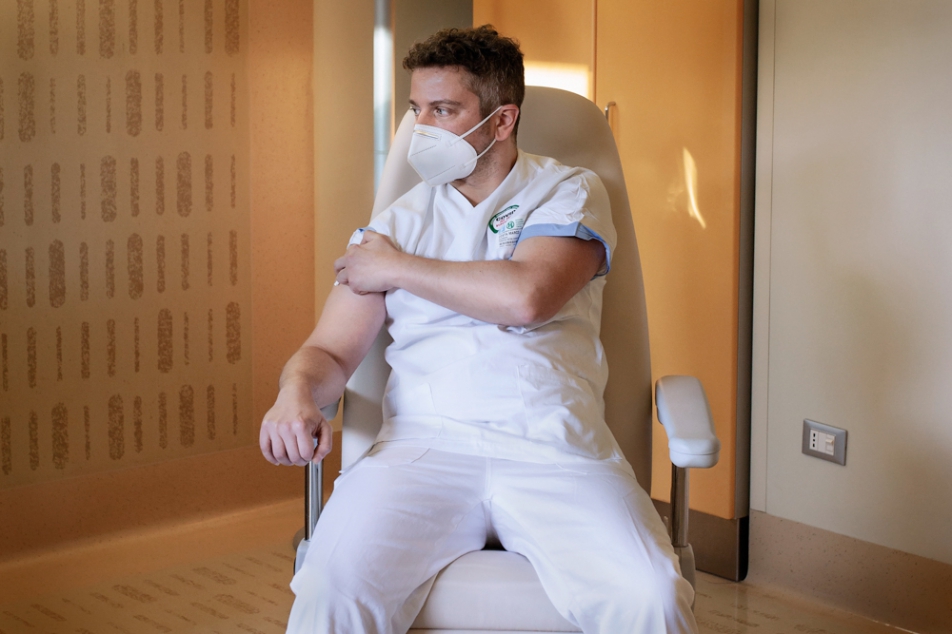
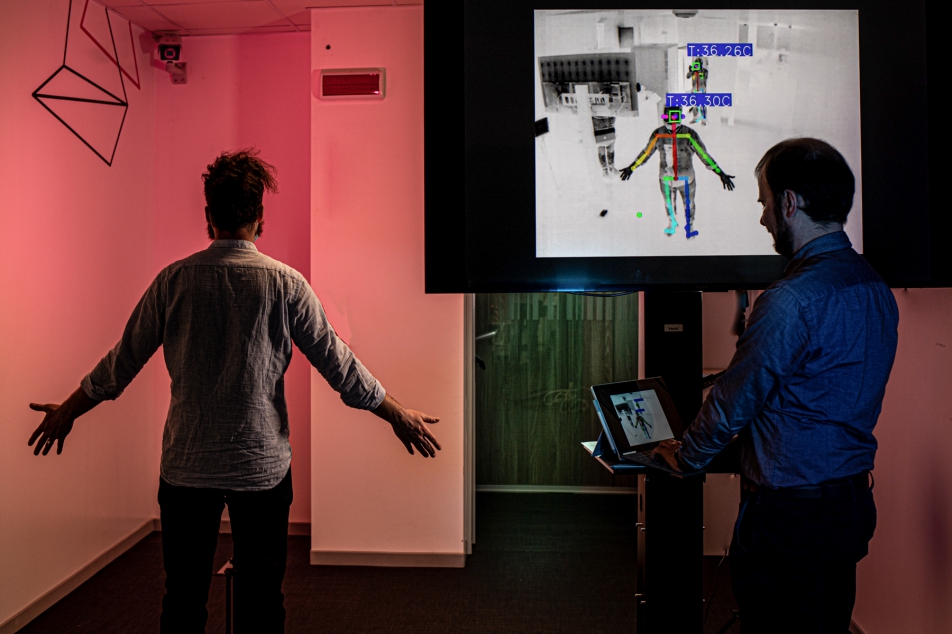
The laboratories of the Italian Institute of Technology in Genoa. Alessio Del Bue and his team have developed an open source software to improve thermal imaging cameras in order to detect body temperature by pinpointing the subject’s forehead.
Milan, Humanitas San Pio X Hospital. Midwives Valentina D'Aries (left) and Stefania Del Duca during a lesson in an online prenatal course. During the Covid-19 emergency everybody must wear a face mask.
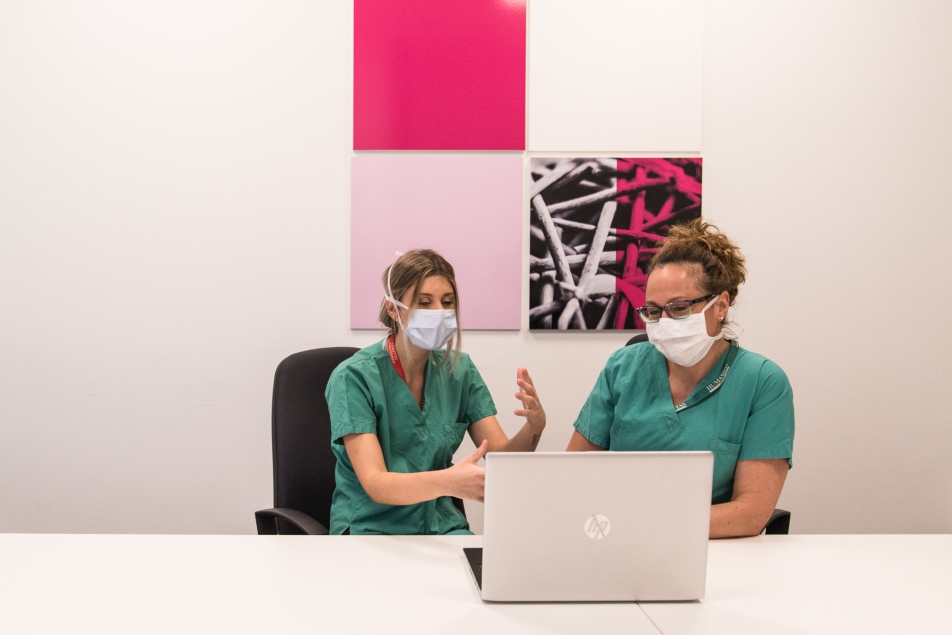
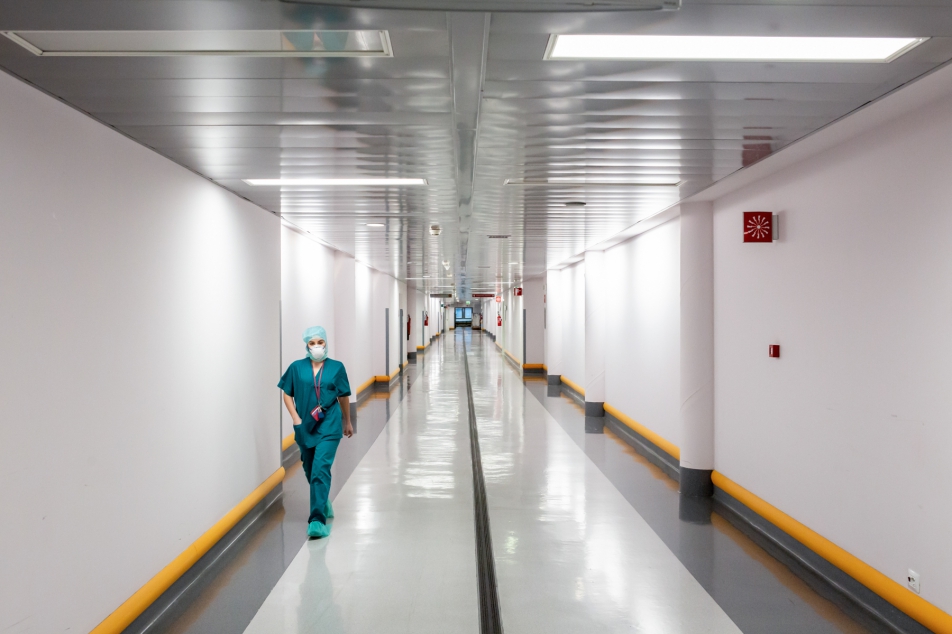
Bergamo, in the Covid-19 patients ward of the Giovanni XXIII Hospital, in the days when the number of new patients put the facility under serious strain.
Italy, Winter Garden Hotel, Bergamo. A patient in his room during a call with a psychologist. Several patients are in need of psychological assistance after having experienced intensive care. The hotel made its facilities available to Covid-19 patients who had been discharged from hospitals, but were still positive and waiting to return to their homes.
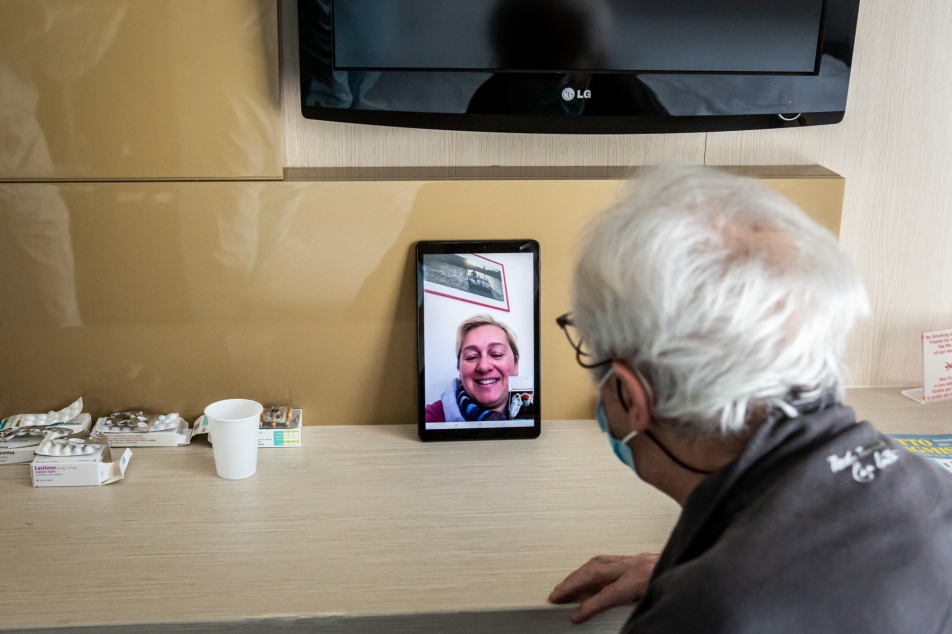
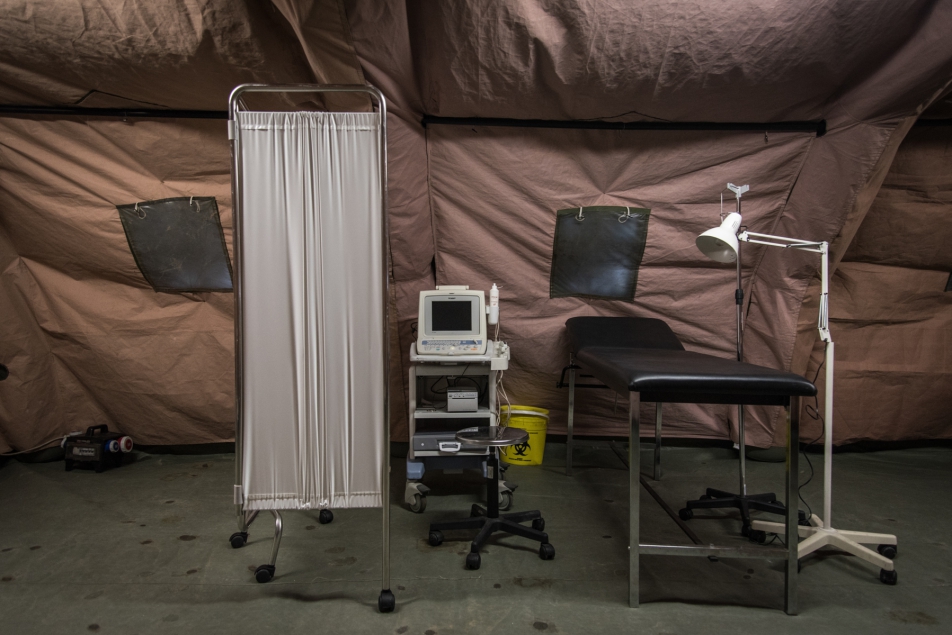
Piacenza, in the field hospital built by the Italian Army.
Elisa Borghi, associate professor of clinical microbiology at the University of Milan, in her laboratory at the San Paolo Hospital. She is using a fluorometer donated by a Chinese company to analyse samples from Covid-19 patients.
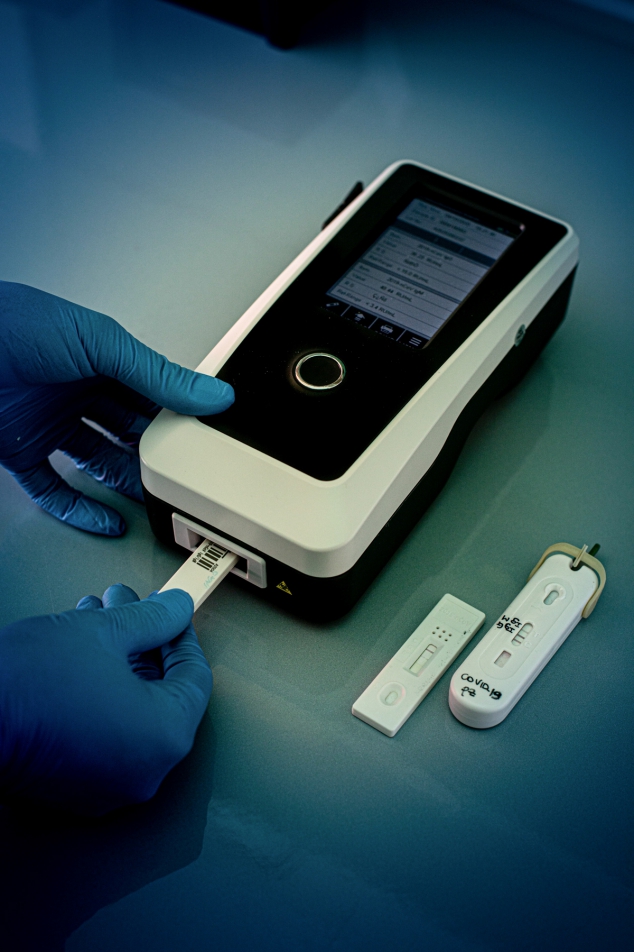
Winter Garden Hotel, Bergamo. A nurse in PPE during the meal delivery. Meals are cooked in the 4-star hotel kitchen.
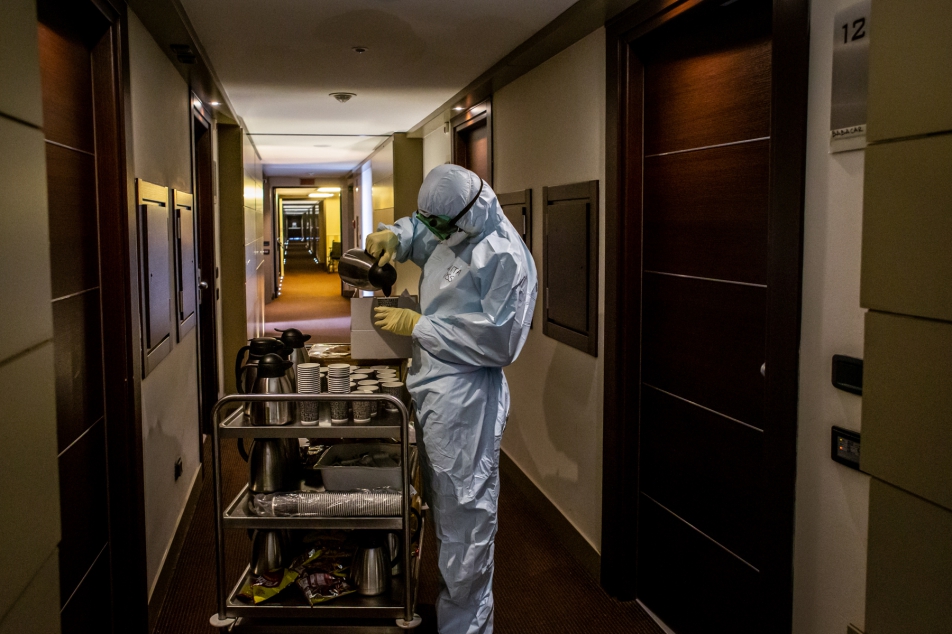
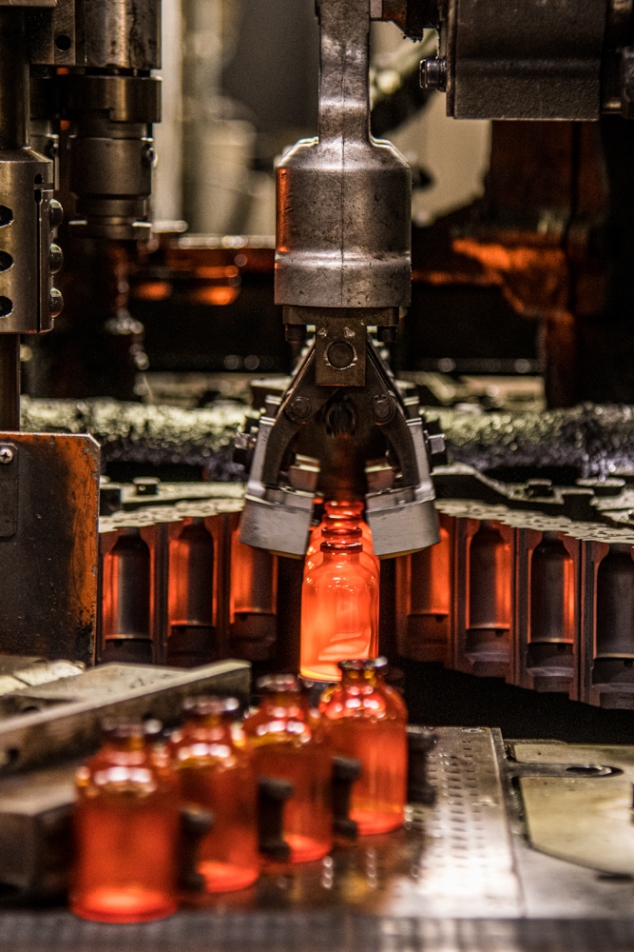
One of the challenges posed by the pandemic is the production of millions of borosilicate glass vials and ampoules made by molding in ovens at very high temperatures, in order to ensure the highest levels of safety in contact with the drug. Bormioli Pharma at San Vito al Tagliamento, near Pordenone, is one of the few companies in the world that can offer complete packaging solutions with vials and ampoules.
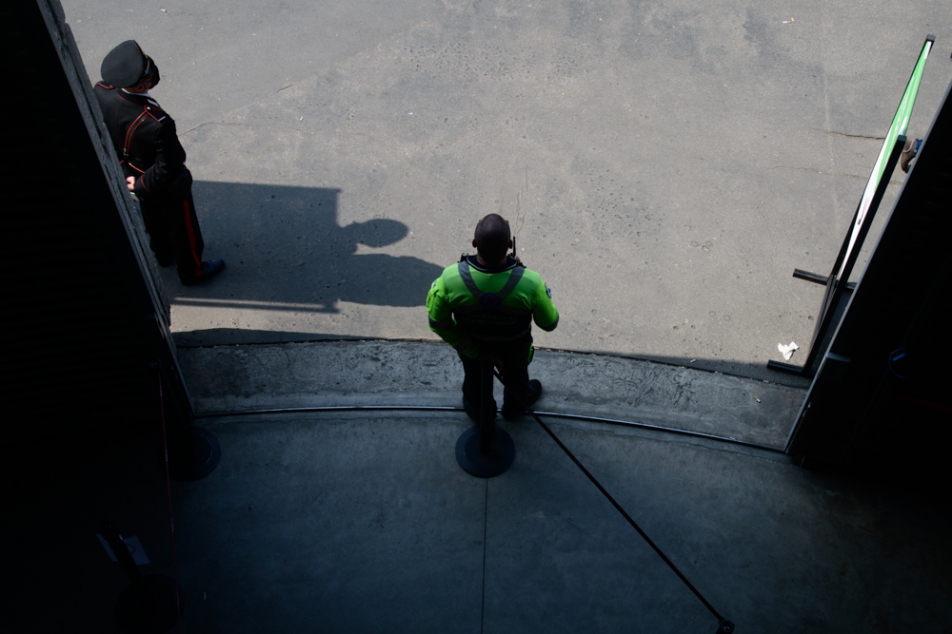
Civil Protection Agency staff welcome members of the public and coordinate “people flow” at the entrance to the Fieramilanocity vaccination center in Milan.
At the Ideafactory headquarters in Milan, founder Mattia Aroldi and Beatrice Cabrini prepare Venturi Valves made of nylon powder. These will be used in lung ventilators for Covid-19 patients in intensive care units.
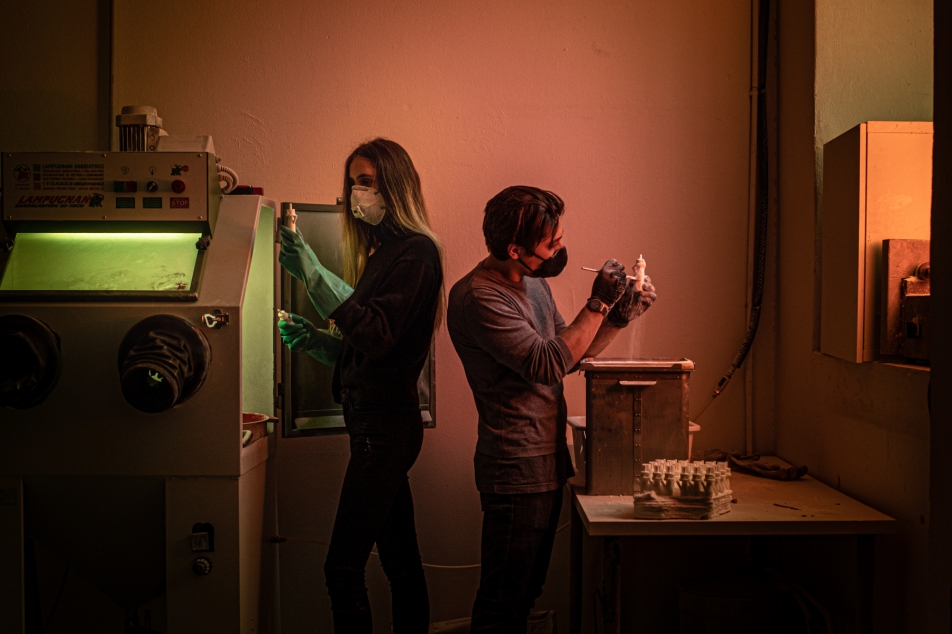
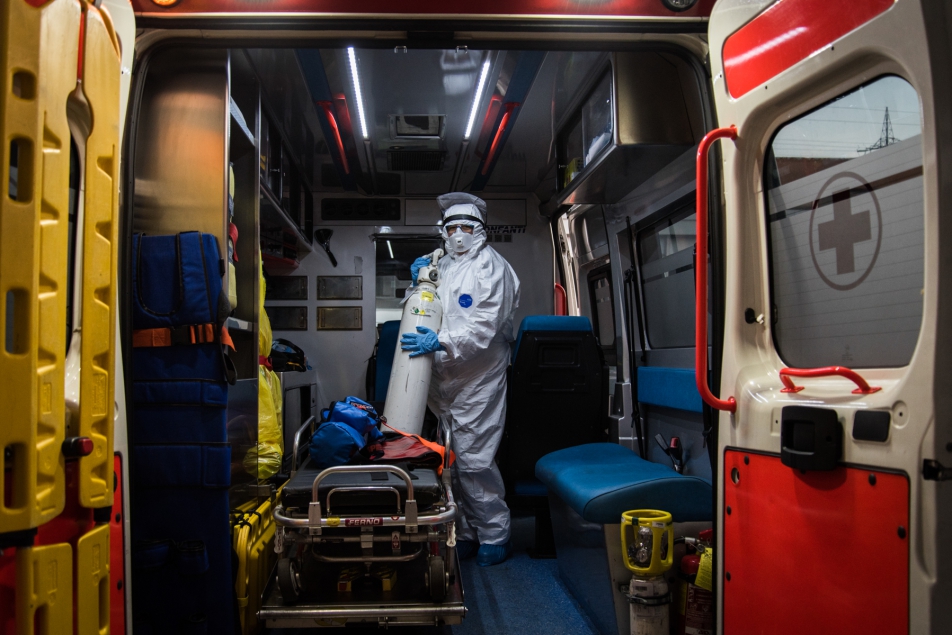
In Sesto San Giovanni (near Milan), Italian Red Cross volunteer Laura Roj fixes an oxygen tank in the ambulance prior to setting off for the work shift.
Cell cultures for the proliferation of single-cell antibodies at the Monoclonal Antibody Discovery (MAD) laboratory of the Toscana (Tuscany) Life Science foundation in Siena.
